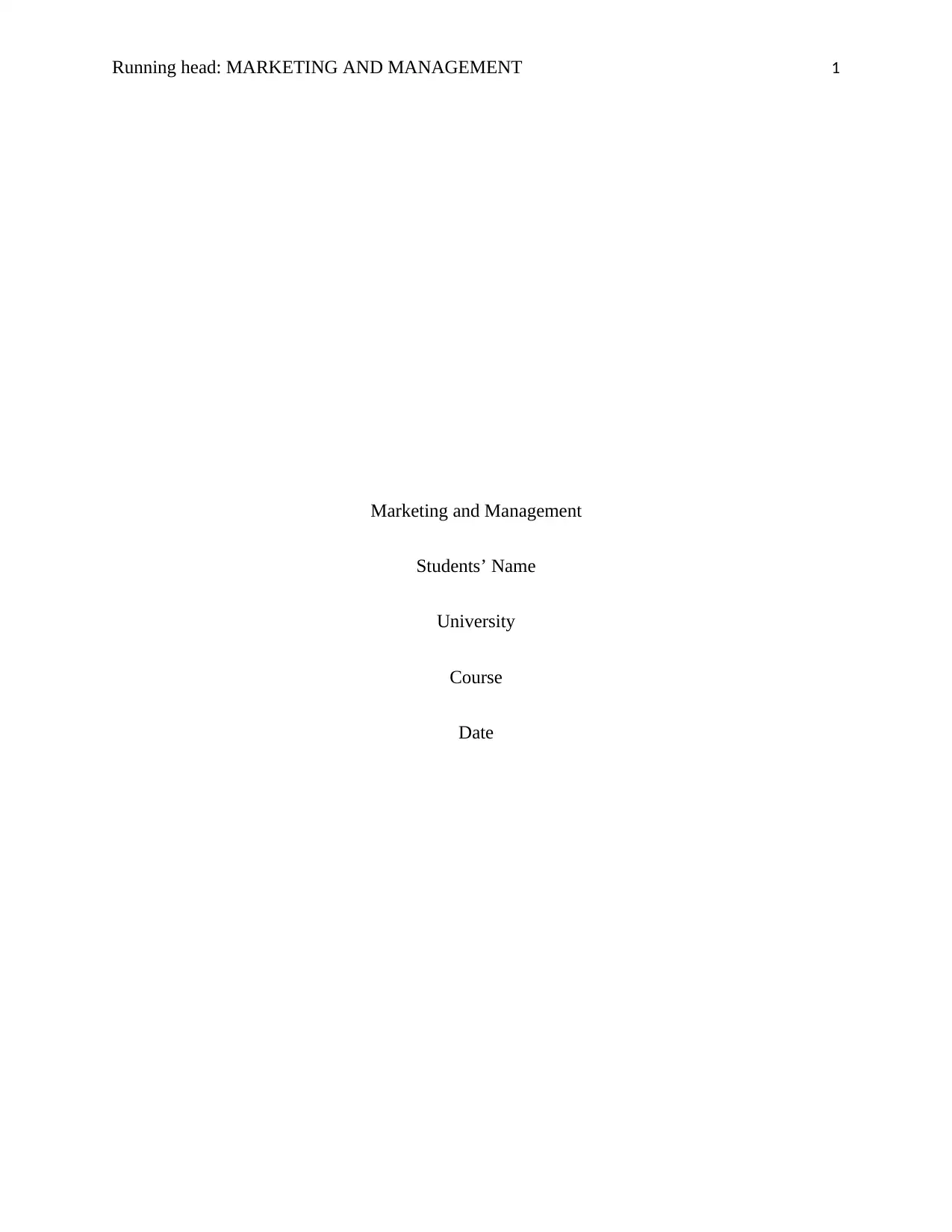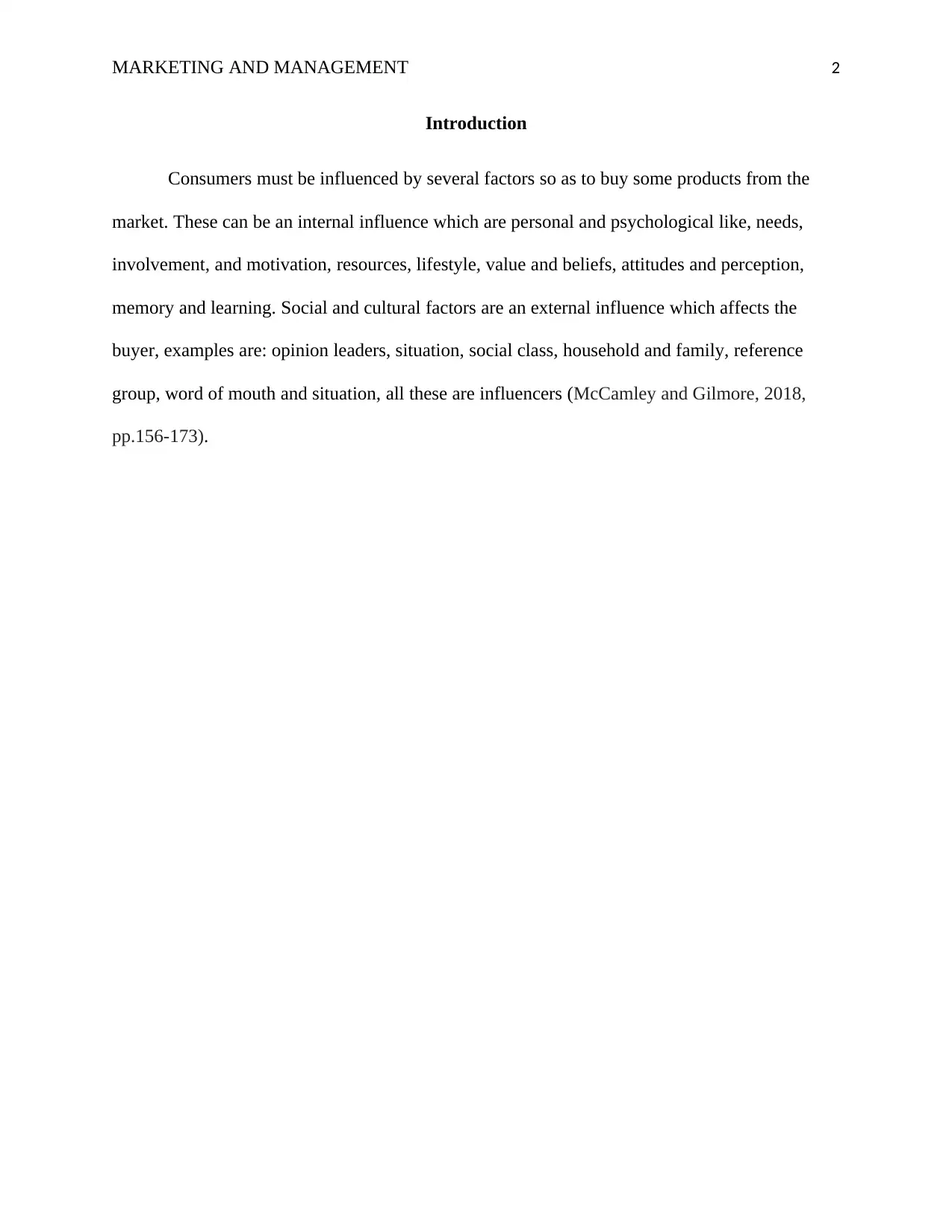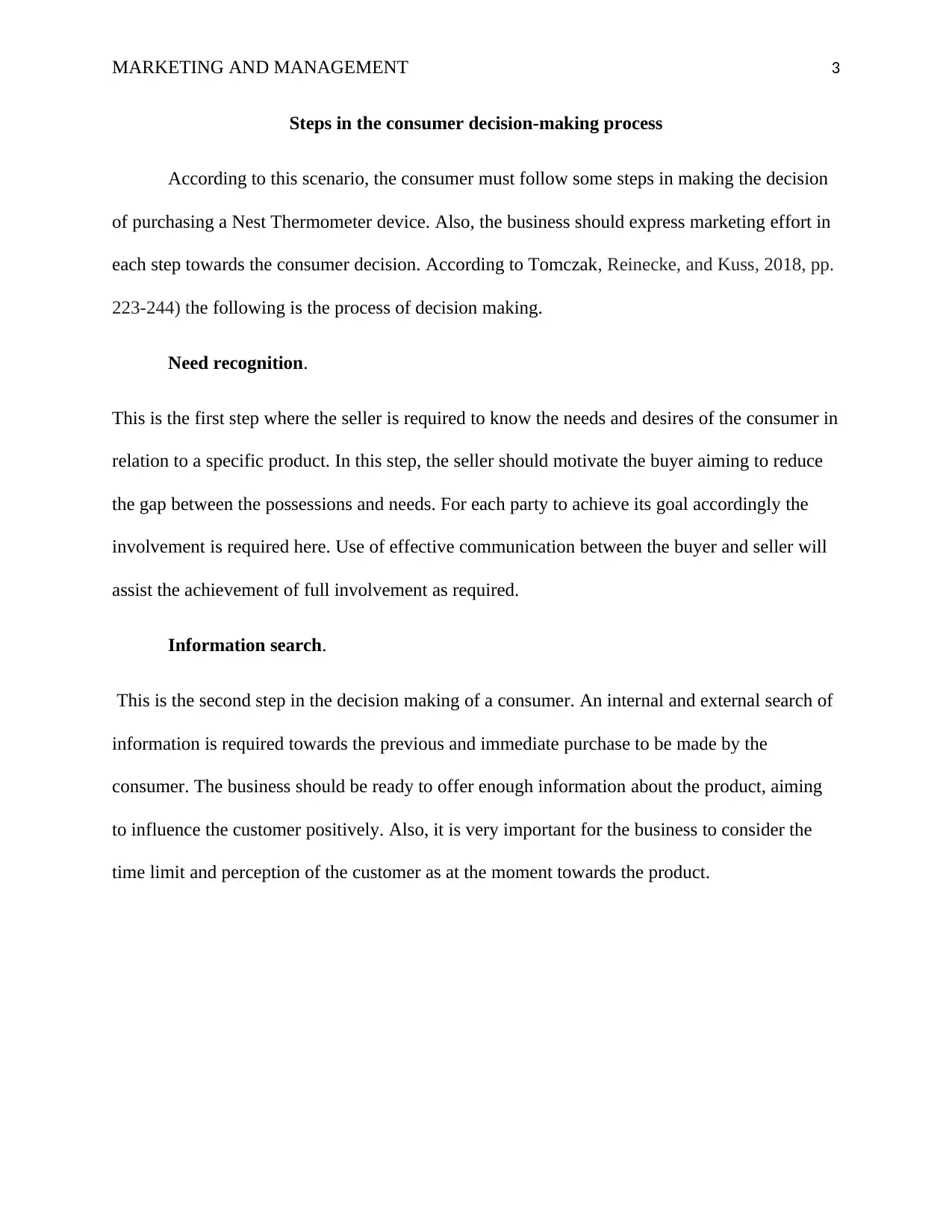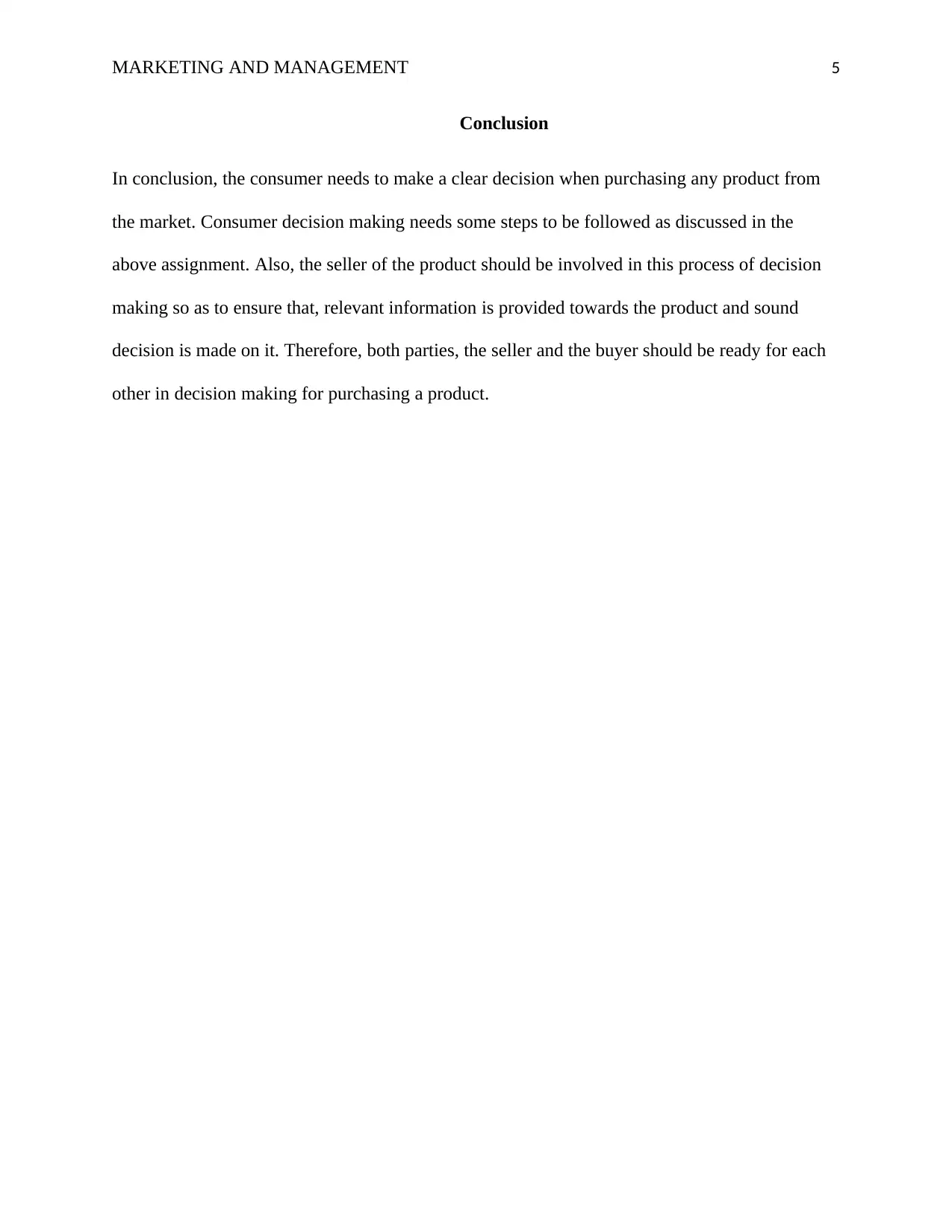Optimizing Marketing: Consumer Decision Process for Nest Thermostat
VerifiedAdded on 2023/05/30
|6
|818
|182
Discussion Board Post
AI Summary
This discussion board post addresses the consumer decision-making process for the Nest Learning Thermostat, as requested by Jessica Sneath, the Chief Marketing Officer of Performance Systems International (PSI). It details the steps a consumer is likely to go through when purchasing the Nest Thermostat, including need recognition, information search, alternative evaluation, decision-making, and post-purchase support. The analysis emphasizes the importance of a strong marketing effort at each stage to influence consumer decisions effectively. The document also provides guidance on what the company’s marketing department should be doing to influence consumers at each step, focusing on understanding consumer needs, motivations, involvement, perceptions, attitudes, and the various internal and external influences that impact their purchasing decisions. The goal is to provide a consumer-centric marketing approach to optimize the sales and growth of the Nest Thermostat.
1 out of 6












![[object Object]](/_next/static/media/star-bottom.7253800d.svg)